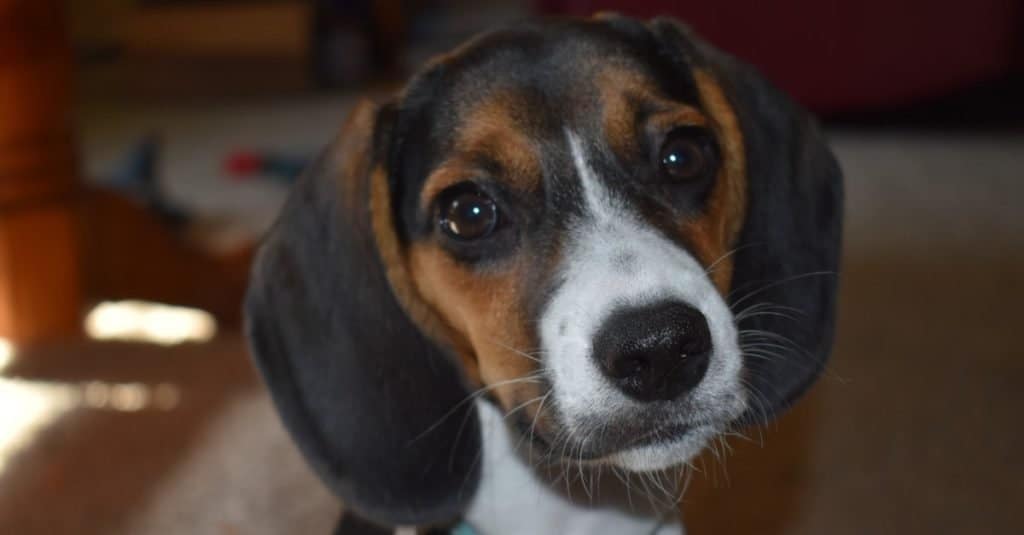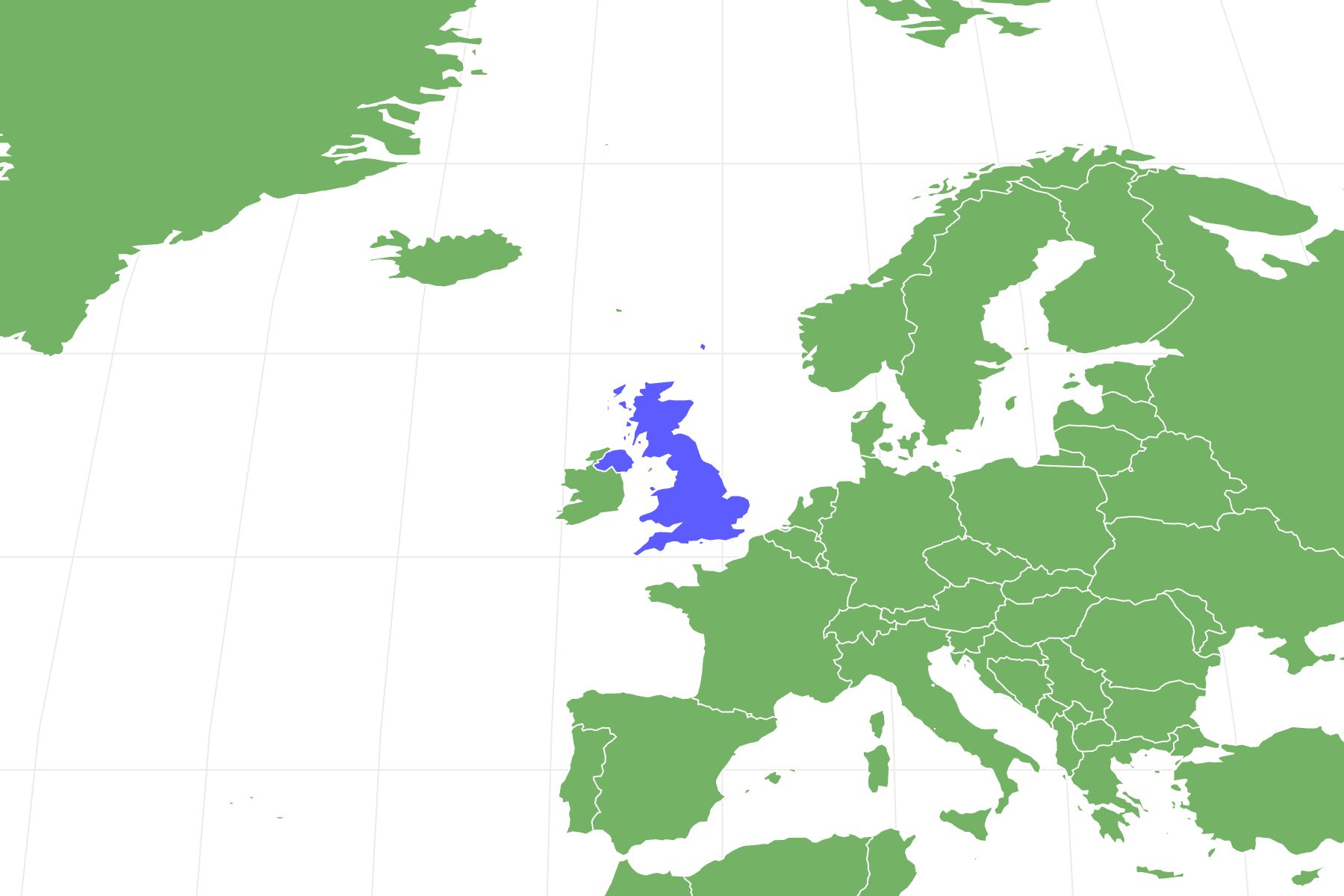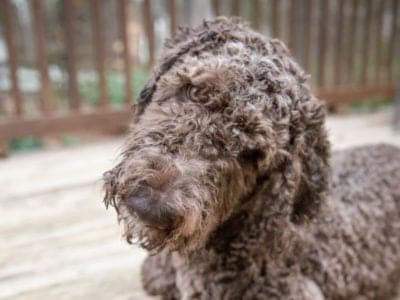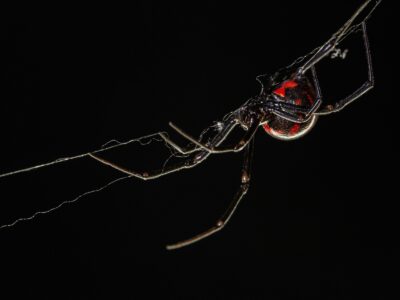Pocket Beagle
.jumbotron {
background-image: url(“https://a-z-animals.com/media/2021/07/Pocket-Beagle-header-400×300.jpg”);
}
}
@media only screen and (min-width: 641px) and (max-width: 920px) {
.jumbotron {
background-image: url(“https://a-z-animals.com/media/2021/07/Pocket-Beagle-header-470×370.jpg”);
}
}
@media only screen and (min-width: 921px) {
.jumbotron {
background-image: url(“https://a-z-animals.com/media/2021/07/Pocket-Beagle-header.jpg”);
}
}
Pocket Beagle
Canis lupus
Queen Elizabeth I of England once owned several Pocket Beagles
Pocket Beagle Scientific Classification
- Kingdom
- Animalia
- Phylum
- Chordata
- Class
- Mammalia
- Order
- Carnivora
- Family
- Canidae
- Genus
- Canis
- Scientific Name
- Canis lupus
Read our Complete Guide to Classification of Animals.
Pocket Beagle Conservation Status
Pocket Beagle Facts
- Fun Fact
- Queen Elizabeth I of England once owned several Pocket Beagles
- Temperament
- Energetic, determined, friendly, and curious
- Diet
- Omnivore
.checked {
color: yellow;
}
Pocket Beagle as a Pet:
- General Health
- Energy Level
- Shedability
- Trainability
- Intelligence
- Tendency to Chew
- Size
- Family and kid friendliness
- Yappiness / Barking
- High
- Separation Anxiety
- High
- Preferred Temperature
- Average climate
- Exercise Needs
- High
- Friendly With Other Dogs
- Group
- Pure bred cost to own
- $500 to $1,500 on average
- Dog group
- Hound
- Male weight
- 7-15 lbs
- Female weight
- 7-15 lbs
This post may contain affiliate links to our partners like Chewy, Amazon, and others. Purchasing through these helps us further the A-Z Animals mission to educate about the world’s species..

Spiders that fly! Fish that walk! And 1000+ more incredible animals. Discover them all for FREE
.photo-gallery {
–margin: 0px auto 0px;
–padding: 0px 0px 0px 0px;
}
.gallery-link {
background-image: url(“https://a-z-animals.com/media/2021/07/Pocket-Beagle-on-floor-1024×535.jpg”);
background-repeat: no-repeat;
background-size: cover;
background-position: center;
height: 500px;
justify-content: center;
text-align: center;
align-items: center;
display: flex;
border: 2px solid #000;
}
.gallery-link img {
height: 50%;
}
@media only screen and (max-width: 768px) {
.gallery-link {
height: 300px !important;
}
}
View all of the Pocket Beagle images!
The modern Pocket Beagle is an attempt to recreate the smaller old English scent hounds from centuries ago.
The Pocket Beagle (also sometimes known as the Old English Pocket Beagle) is the name given to a unique line of miniature Beagles. As far back as the 13th century, breeders began to experiment with small hunting dogs created from the Beagle line. The product of their efforts was known as the Glove Beagle, so-called because it was almost small enough to fit on a glove.
See all of our expert product reviews.
The Pocket Beagle was developed alongside it, although it isn’t certain whether they were distinct dogs or simply two different terms that referred to the same thing. Regardless, these small scent hounds eventually disappeared from history. The modern Pocket Beagle is an attempt to recreate these small hunting companions that once strode beside English nobility. Due to their indefatigable nature and their amazing sense of smell (the nose contains some 220 million scent receptors), they are considered to be quintessential hare hunters out in the field.
The Pocket Beagle isn’t currently recognized as a distinct breed by any organization, but the American Kennel Club does recognize smaller dogs standing under 13 inches tall as acceptable attributes of the Beagle breed. Regardless, the Pocket Beagle is characterized by a slender and athletic physique, a long and erect tail, and drooping ears. The smooth medium-length fur is usually tricolor. The three most accepted colors are white, black, and tan, but other colors can be mixed in as well, including blue, gray, silver, red, and liver. There are even silver tricolor and chocolate tricolor coats.
There are usually three methods that breeders use to achieve the smaller size: cross-breeding, dwarfism, and selecting runts or smaller dogs from a litter. The first method disqualifies it from purebred status, whereas the last two methods can introduce health problems into the line. Unfortunately, there are a lot of breeders who aren’t very careful and allow health problems to spread through their litters.
Potential owners should do their research and try to find reputable breeders who have a history of producing nothing but high-quality smaller Beagles. The birth weight isn’t always a perfect indicator of its eventual size, so unless the small size is already bred into the line, you may need to wait until the Beagle is full-grown at around nine months of age to determine its size.
Beagles vs. Pocket Beagles
The main difference between these two dogs is their size. Pocket Beagles generally stand no taller than the 13-inch threshold of the accepted Beagle standard. Depending on how it’s bred, the Pocket Beagle may have other differences in terms of coat color, proportions, and skeletal structure.
Health and Entertainment for your Pocket Beagle
See all of our expert product reviews.
3 pros and cons of owning a Pocket Beagle
| Pros! | Cons! |
|---|---|
| Friendly and Charming The Pocket Beagle loves the companionship of people and dogs. |
Stubborn Streak The Pocket Beagle has a mind of its own. |
| Highly Intelligent This breed can grasp human commands with incredible ease. |
Tendency to Gain Weight This breed can easily become obese unless you watch its food intake. |
| Energetic and Athletic This dog makes for a great exercise companion. |
Bores Easily Without proper mental and physical stimulation, this little dog can be a wrecking ball. |

somalithebeagle/Shutterstock.com
Pocket Beagle Size and Weight
The Pocket Beagle is a miniature version of a regular-sized Beagle.
| Height (Male) | 7 to 12 inches |
| Height (Female) | 7 to 12 inches |
| Weight (Male) | 7 to 15 pounds |
| Weight (Female) | 7 to 15 pounds |
Pocket Beagle Common Health Issues
Depending on how it’s bred, the Pocket Beagle may be at risk of several health conditions, including epilepsy, dwarfism, hypothyroidism, cancer, obesity, and developmental disorders of the hip, legs, or kneecap. While no dog will ever be perfectly healthy, it’s still a good idea to find a breeder whom you can trust to produce a healthy dog with minimal problems. Ask them to provide proof that their dogs have been tested for common genetic and developmental issues. You should also set up an early appointment with a vet to go over common issues. If well-cared for, the Pocket Beagle has a typical lifespan of 10 to 15 years old.
To sum up the most common health problems of the Pocket Beagle:
- Obesity
- Cancer
- Dwarfism
- Epilepsy
- Hypothyroidism
Pocket Beagle Temperament
If you’ve ever had any experience with the spunky and energetic Beagle, then you should know what to expect from the Pocket Beagle, except perhaps even more hyperactive. This is a friendly, charming, and fun-loving dog that will form a deep bond with just about any member of a family. The one caveat is that it does need frequent mental and physical stimulation throughout the day. Otherwise, if it’s left alone for long periods of time, it might suffer from acute separate anxiety and resort to destructive behavior.
How to Take Care of the Pocket Beagle
Despite its small size, the Pocket Beagle is a bit of a responsibility to care for, at least in terms of its exercise and social needs. While this dog will be satisfied with just being your companion, rather than a hunting dog, you should be aware that the Pocket Beagle has retained strong hunting instincts that may overwhelm even the best training. Fortunately, as long as it receives enough exercise and play, it can adapt reasonably well to different living arrangements. If you have any other questions or concerns about dog ownership, then you should talk with your vet.
The Best Dog Food for Pocket Beagles
A full-grown Pocket Beagle will probably need around a cup of high-quality dog food every day, taking into account its size, age, and activity level. This breed has a strong tendency to consume anything it can, so you should keep food away from its prying mouth in order to maintain a proper weight.
A-Z Animals believes the best dog food for Pocket Beagles is Wellness CORE Small Breed Dry Dog Food with Wholesome Grains, High Protein Dog Food.
All in small enough bites for your little pal, real turkey and chicken ingredients provide joint-maintaining chondroitin and glucosamine. Since it combines high-protein with fiber from healthy grains like oatmeal and barley, this food helps keep dogs full to minimize overeating and excess weight.
Think about adding Wellness CORE Small Breed Wholesome Grains High Protein dog food to your amazon cart.
- SMALL BREED DRY DOG FOOD: Optimal protein levels and calorie content to help support the higher energy needs of small breed dogs
- SAVORY FOOD DOGS LOVE: Wellness CORE is available in grain and grain free recipes, as well as limited ingredient diets for dogs with food sensitivities
- LEANER BODY MASS AND MUSCLE TONE: Supported by a high concentration of protein from fresh meat ingredients
- SUPPORTS HEALTHY SKIN AND COAT: With guaranteed levels of omega fatty acids from ingredients such as flaxseed and salmon oil
- WHOLE BODY HEALTH: Supported by omega fatty acids, antioxidants, glucosamine, probiotics and taurine for a healthy heart
Pocket Beagle Maintenance and Grooming
These dogs should be groomed with a medium-sized bristle brush or hound glove at least once a week to remove or loosen up dead hair; grooming may increase in frequency during the spring shedding season. This breed is vulnerable to ear infections and needs frequent cleanings at least once every two weeks. You should also trim your dog’s nails if they start clicking on the floor. Finally, you should brush its teeth on a regular basis.
Pocket Beagle Training
These dogs have a reputation for being somewhat difficult to train. It may take nearly a full year to properly house train them. Owners should also work on curbing some of their natural instincts to wander off or bark excessively. Positive reinforcement methods and plenty of patience will go a long way with this dog. If you are struggling at all, then you might want to hire a professional trainer.
Pocket Beagle Exercise
These dogs need at least an hour of exercise every single day. These sessions should be a mixture of intense exercise, games, playtime, and long walks. Because of their tendency to wander off, it’s a good idea to keep your dog on a leash unless it’s been specifically trained to come back to you.
Pocket Beagle Puppies
These dogs are a bit rambunctious and destructive as puppies. They will need early training and socialization to become well-rounded full-grown adults, beginning preferably at around a few months old. Crate training is also very much recommended to curb its anxiety and to help with house training.
The Pocket Beagle and Children
These dogs are a great choice for a household with children. Its charming personality, easy-going temperament, and its fun-loving nature will endure it to people of all ages. Unfortunately, on account of its size, the Pocket Beagle may not do well with particularly rough play.
Dogs Similar to the Pocket Beagle
If you are a fan of scent hounds, then you might want to check out the following breeds:
- American Foxhound – As a quintessential American hunting dog, the Foxhound is a medium-sized breed with long, slender legs and a smooth coat of black, tan, and white fur. They have a friendly, easy-going temperament that makes them ideal, though high-intensity, companions.
- Basset Hound – Originating from France, the Basset Hound is like the opposite of the noble-looking American Foxhound. It has drooping skin, disproportionate features, and very short legs, so its stomach is almost touching the ground. But the Basset Hound does have a docile, gentle personality (great for families with babies or toddlers) and an amazing sense of smell.
- Bloodhound – Among the largest of the scent hounds, the Bloodhound is a European breed, possibly originating from France, with the tenacity and power to track larger prey like deer and boar. It has wrinkly skin, drooping ears, and a short coat composed of black and tan hair.
Famous Pocket Beagle Dogs
The Pocket Beagle is not quite as well-known as its larger brethren. Nevertheless, there are a few famous examples of Pocket Beagle ownership throughout history. Queen Elizabeth I, who ruled England between 1558 and 1603, was said to own several Old English Pocket Beagles. She apparently entertained guests with their baying voices. This earned them the nickname of Singing Beagles.
Popular Names for the Pocket Beagle
If you are looking for an appropriate name, then you might want to choose one of the following options:
- Hunter
- Molly
- Penny
- Charlie
- Cooper
- Lucy
- Sadie
- Tucker
- Bella
- Milo
Last update on 2022-07-06 / Affiliate links / Images from Amazon Product Advertising API
View all 117 animals that start with P
Pocket Beagle FAQs (Frequently Asked Questions)
What is a Pocket Beagle?
The Pocket Beagle is a miniature version of the full-sized Beagle. It may or may not be a purebred dog. Many different colors may be allowed, including some unusual ones like silver or liver. The temperament is generally sweet, good-natured, and curious.
How big do Pocket Beagles get?
The Pocket Beagle does not weigh more than 15 pounds and stand 12 inches at the shoulders.
How healthy are Pocket Beagles?
Depending on how they’re bred, the Pocket Beagle may be at risk of some hormonal and developmental disorders. Unfortunately, some breeders may completely neglect the health of their dogs; or even worse, deliberately create health problems in the process of engineering a Pocket Beagle. This can be resolved somewhat by doing your research and asking the breeder for evidence of their dogs’ health.
What is the difference between a Pocket Beagle and a Beagle?
The main difference is their size. The Pocket Beagles are less than 13 inches tall.
What is the lifespan of a Pocket Beagle?
The Pocket Beagle has a typical lifespan somewhere between 10 and 15 years.
How much is a Pocket Beagle?
The price of new Pocket Beagle puppies will normally cost anywhere between $500 and $1,500. If cost is a concern, however, then you might want to consider adoption. This dog will sometimes show up at a shelter or rescue group. Rescue groups usually take good care of their dogs. It’s even possible to find a Beagle-specific rescue group that may carry smaller varieties.
What is the difference between a beagle and a pocket beagle?
The most noticeable difference between the pocket beagle and beagle is their size! The pocket beagle is almost exactly half the size of the regular beagle, coming in at as little as 7 inches tall and the same weight.
Sources
- Dog Time, Available here: https://dogtime.com/dog-breeds/pocket-beagle#/slide/1
- The Happy Puppy Site, Available here: https://thehappypuppysite.com/pocket-beagle/
- American Kennel Club, Available here: https://www.akc.org/dog-breeds/beagle/






















